The bonds of family and community
Poverty and cruelty among Russian peasants in the late 19th century
by Jason Crawford · November 28, 2021 · 17 min read
Village Life in Late Tsarist Russia is an ethnographic account of Russian peasants around 1900. The author, Olga Semyonova Tian-Shanskaia (“Semyonova” for short), spent four years researching in the villages—one of the first to study a people through prolonged direct observation and contact with them.
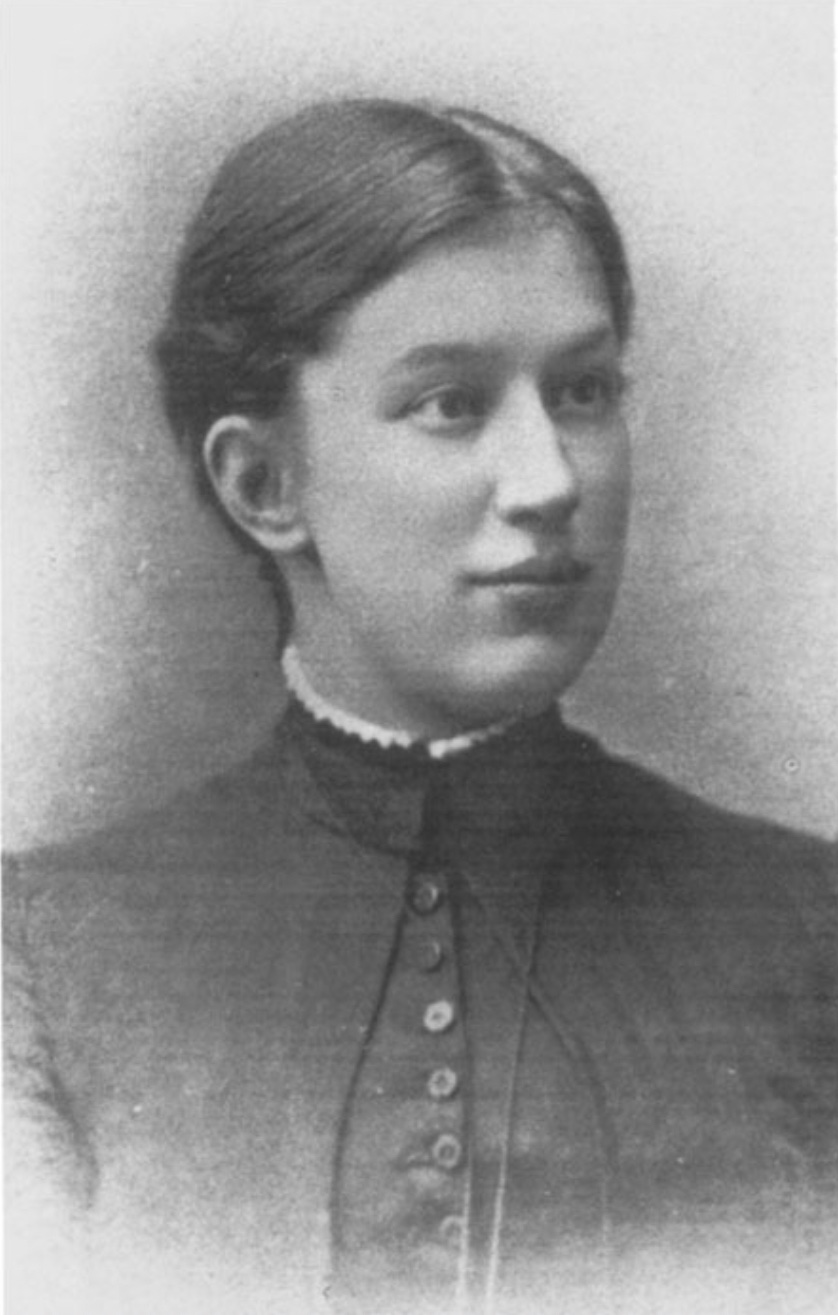
I was interested in the subject as part of learning, concretely, about the quality of life for people in various places and times and at various stages of development. Although material progress was advancing rapidly at the end of the 19th century, much of that progress had not yet reached the province of Riazan where Semyonova did most of her studies. What was life like there?
In brief, I went in expecting poverty, which I found. I did not expect to also find a disturbing degree of cruelty and abuse.
First, let me share some passages from the book that I highlighted, roughly organized by theme. At the end I’ll discuss how to interpret this and what to make of it.
In the block quotes that follow, brackets indicate insertions by the editor of the volume, David Ransel, not by me. Photographs are all taken from the Kindle edition (and presumed to be out of copyright).
Poverty
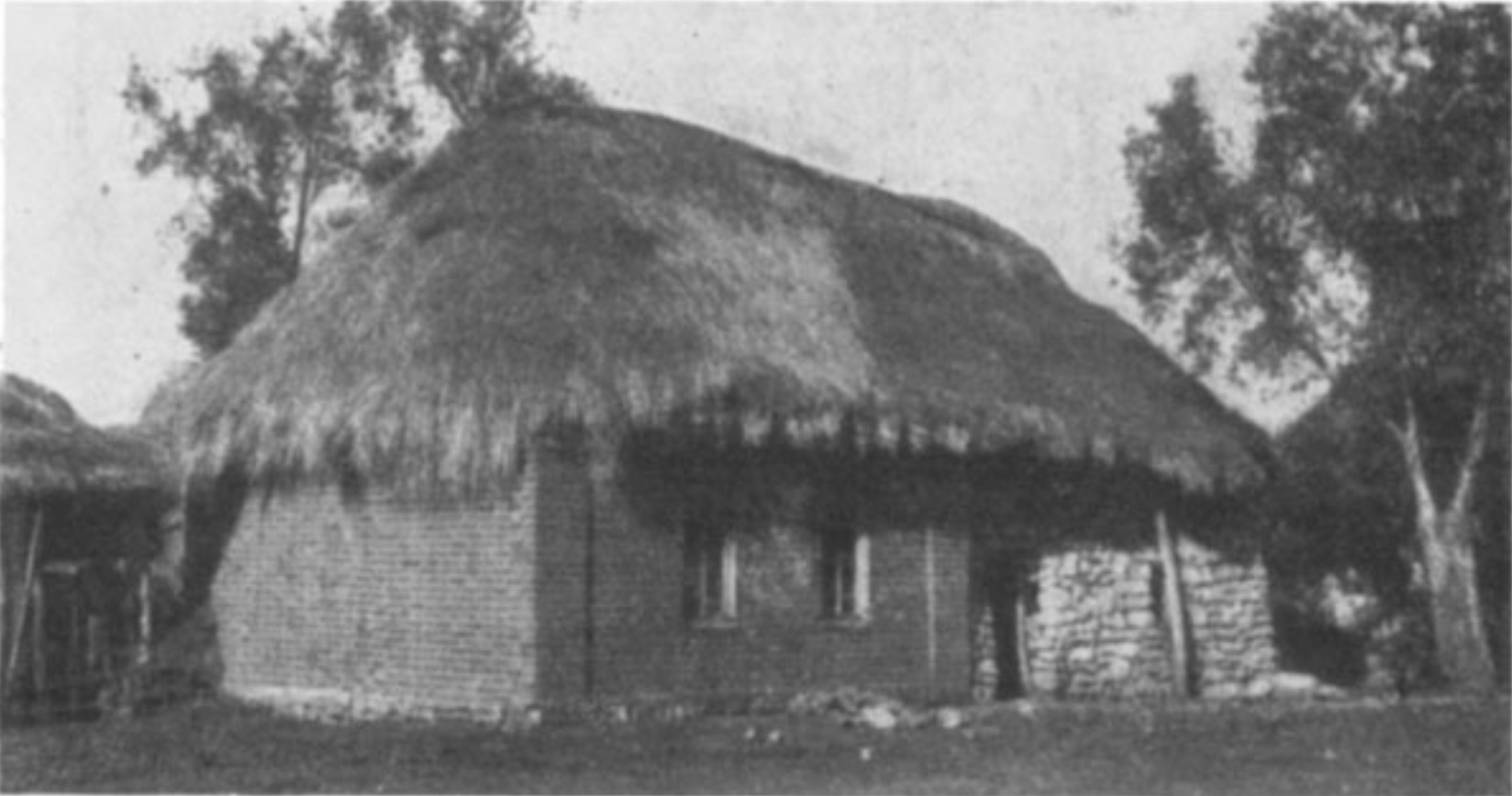
Here is the typical peasant diet:
Dinner consists of cabbage soup, porridge (kasha), or, again, potatoes and bread. The soup, of course, has no meat in it, just cabbage, but occasionally sour cream is added. Potatoes are mixed with kvass and onions. The porridge—usually millet—is eaten either with milk, in what is known as the thin form (kulesh), or in a thicker form made with hemp-seed oil. After dinner, the peasants take a rest and then return to the fields. They take along some bread for an afternoon snack sometime between three and five o’clock. When the sun sets, the peasants go home, and at about nine in the evening they eat their supper, which is warmed-over dinner, with the possible addition of skim milk.
You get a better sense of the standard of living from the foods that they consider special treats:
Foods that can be found on a peasant’s table only during the annual festival, or during a wedding or baptismal dinner, include pancakes (bliny), meat (veal designated for holidays—uboina), potato fritters (drachena), buns (pyshki), salamata (a kind of thin gruel), kalinnik (a kind of cake), fritters (olad’i), and cabbage soup with corned beef (solonina).
That, of course, is during good times. In bad times:
During a famine, peasant meals consist of stale bread moistened in water and mixed with goosefoot. The men make extra efforts to find any type of work, and sometimes the entire family goes out to beg. As soon as the snow melts, hungry children pick roots and herbs to eat, such as sorrel and clover. Peasants also make soup with goutweed (Aegopodium podagraria).
Another hallmark of poverty is the burning of solid fuels inside the home. Here’s a visualization of the problems that causes:
Stoves with chimneys are called “white,” while chimneyless stoves are referred to as “black.” When a “black” stove is being lighted, the door from the main room into the entryway is left open so that the smoke up to the level of the door is drawn out, but above that level it forms a blue and white blanket through which nothing can be seen. The top of the door is no higher than a rather short person, so that one has to stoop to enter the house (the ceiling itself is only 5’10” high). A good-sized man finds it difficult to stand up when the stove is being fired, because his eyes will be in the caustic cloud of smoke. Even when seated on a bench, one feels the acrid smoke in the eyes.
It’s bad enough to burn wood and coal; these peasants often had to burn straw, or worse:
Peasants bring straw in at night to sleep on, and then in the morning they feed this straw into the stove. The use of fresh straw each day provides reasonably hygienic bedding for the peasants. But this is so only in years of abundant harvest. In a bad year, whatever little straw they have is given to the livestock; sometimes even straw roofs have to be pulled down to save the animals from starvation.
The shortage of straw forces peasants to use their clothes for bedding and to heat the house with dried manure or weeds such as burdock, thistle, and nettles. Accordingly, illnesses increase in such a year. The lack of fresh bedding is one cause. The poor fuel likewise does much damage to the eyes. In the drought years of 1891–1892, around ten people in two of our small villages (each containing about fifteen households) lost their eyesight temporarily or permanently from the smoke of their stoves. The smoke, which was produced by burning dried manure and weeds found on the roadside and in ravines, was so acrid that the victims (mostly old people and children) developed cataracts. All of them were admitted to the regional hospital in town, but three of them never got their eyesight back.
Unfortunately, the peasants were also ignorant of basic hygiene—in the Tsarist era, the germ theory had not yet made its way from the Institut Pasteur to the Russian peasantry:
If a mouse falls into a tub of pickles, sauerkraut, or pickled apples, the woman of the house will nearly always summon the priest to perform a cleansing ritual. The mouse is plucked from the tub, and the priest proceeds to say a prayer over the tub, pass a cross over it three times, and then bite into a pickle or apple or try some of the sauerkraut. After this, the contents of the tub are again regarded as clean.
And the combination of this ignorance with poverty resulted in health disasters:
In the work season, peasants often catch colds and lose their voices (“My whole chest is blocked up,” they report) because they drink cold water when they are overheated. Flushed with heat and “assaulted by thirst,” as the peasants say, they cannot seem to get enough to drink and will take water from any source available. They drink from a roadside ditch, from a muddy puddle, from a swamp, wherever they can find some water to quench their thirst. Tapeworms and roundworms are common among peasants. In the fall, the water in the river is literally poisoned by hemp that is soaked there until the first frosts. There are cases of poisoning with this water.
Morals
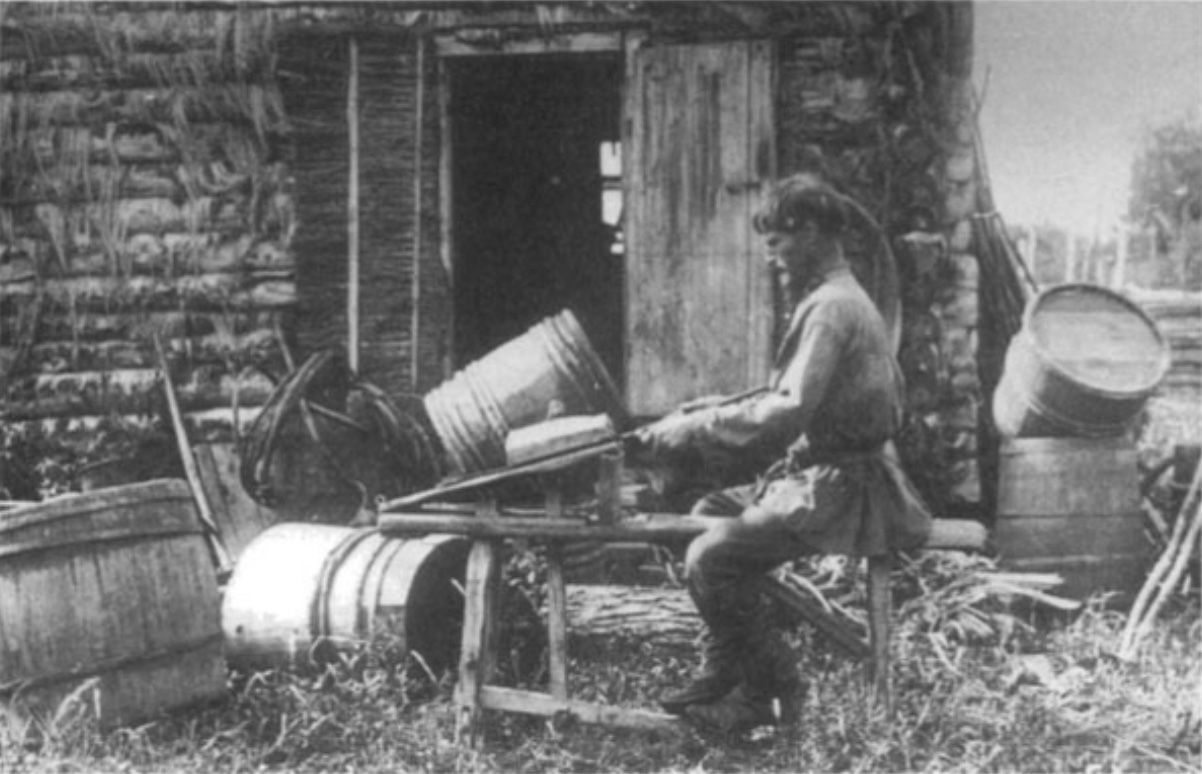
Semyonova is very unimpressed with Russian peasants’ work ethic:
… peasants give no thought to saving for the future. If a peasant has a good harvest that will keep him until the next year, he will stay at home and loaf and cannot be enticed to take an extra job at any price. Peasants hire themselves out as farm laborers only when driven to it by dire need, when they have, so to speak, a knife at their throat. [Then they will do] the most arduous work imaginable.
The peasants’ lack of respect for hard work is remarkable. “Him? He digs in the field like a beetle from morning till night!” They often say this with scorn.
She also saw resentment and envy:
The better-off peasants are bitter about the attitude of their poorer neighbors. “They hate and envy us constantly, saying things like: ‘What makes you think you’re so much better? Just wait, you’re going to be as poor as us.’ If you plant an apple tree, they resent it, saying: ‘Now that big shot is planting an orchard! We are starving while he is putting in an orchard, and fencing it off at that!’” And they think nothing of breaking down the fence and uprooting the tree. If the tree happens to survive and bear fruit, they feel it is their duty to raid it. “That’s how much hate they have! And if some misfortune should befall you, they’ll make sure to finish you off.”
True to the Russian stereotype, the peasants drank a lot:
Prodigious amounts of alcohol are consumed at wedding parties. I myself have attended weddings at which nine-and ten-year-old girls were made to drink so that they would dance for everyone’s entertainment.
The best occasion for young people to get drunk for the first time is the annual festival, which in this region takes place in connection with St. Michael’s Day. On that holiday, every person in the parish is drunk. In a good year the festival lasts for a week, but even when the crops are poor, people manage to go on a spree for three days.
Accidents abound in the springtime [as a result of drunkenness]. Some people drown in water-filled ravines. Others are crushed under falling wagons; a drunken peasant will have a wagon tip over on him, and that is the end of him.
Another occasion for general drunkenness is seasonal field work for the landlord (usually mowing and transportation of produce to town), who by way of payment treats the peasants to refreshments. On these occasions dreadful fights break out and can result in maiming or even killing with a scythe.
After the [church] service, abstemious peasants go home, while others head for the tavern, where everyone gets drunk. The more sober peasants eat dinner at home, rest, and then “just sit” till the evening, talking about their affairs and discussing the harvest and related subjects. Yet even back in the home village, there are opportunities to have a drink, and it is unlikely that a peasant will let a Sunday go by without having one. In the evening, women get a feeling for the amount of alcohol consumed by their husbands by the intensity of the beatings they receive.
Also true to the stereotype:
Fistfighting and swearing are learned quite early. As soon as Ivan began to walk, he started fighting with other children. He was actually encouraged to do this, especially if he was able to best another small child. Ivan learned swear words from his older brothers and sisters, even before he could put together a complete sentence. He started to call his mother a bitch whenever she denied him something, much to the delight of the whole family, even the mother herself. They would actually encourage him on such occasions.
(“Ivan” here is a composite figure representing the typical Russian peasant child.)
Theft was common:
When a group of young horseherds includes a few older boys, say about age sixteen or seventeen, they instruct the younger ones to steal liquor from home when their parents are away. The loot is then shared by all, not infrequently including boys ten to twelve years old.
Theft between the spouses is not uncommon. It may be the husband who steals money from his wife’s trunk for some “need” of his or just to enjoy himself at a tavern. Or the wife might take some flour or grain from her husband and use it to pay for soap or some satin cloth at the store. When a husband is drunk, his wife will slip his wallet out of his boot. Children, too, steal eggs or anything handy from their mothers. Wives swipe wool from their husbands.
In one incident, Semyonova hired a peasant woman to cook, and gave her flour to make bread. The woman used some of the flour to bake cakes for herself and her husband. Semyonova talked to another of the servants, Katerina, about this:
Katerina: “That’s not stealing! She just baked and ate it. She didn’t take the cakes to her room or hide them in the storeroom.”
I: “But she took the flour, and as a result the laborers had less bread. What’s the difference if she stole it and took it home or ate it right here? It’s still robbery.”
Katerina: “But she ate the cakes right here in your house, together with her husband; that’s not robbery. If she had stolen the flour from a locked cupboard or saved it for the future, that would probably be a sin.”
Try as I might to explain to Katerina that unauthorized appropriation of another person’s property, whether consumed immediately or saved for future use, is still a theft, she would not agree with me.
Semyonova notes that “the very same elder” who turned in the flour thief, “when he is guarding the landlord’s apple trees against raids by the boys hired on temporarily as shepherds, fills his pockets with apples every time he makes the rounds.”
Cruelty
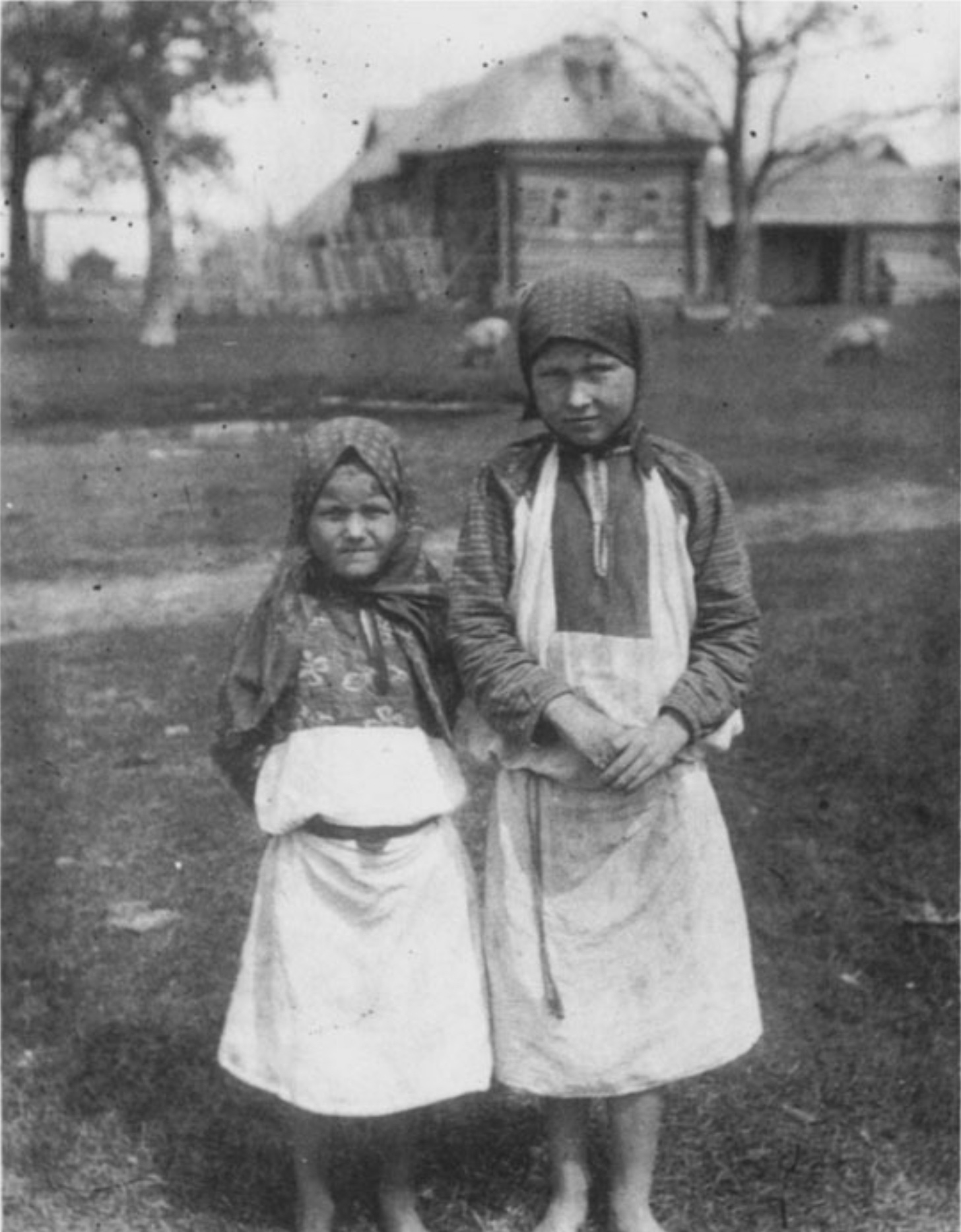
Warning: from here on out, this post may be difficult to read.
The peasants had no regard at all for animals:
Cats and dogs are also less useful than other animals, and peasants will torture them just for the fun of it, just to see what will happen. Little children like to throw cats and puppies, when they can catch them, into the water to see if they can swim. When I ask, “Don’t you feel sorry for them?” the children respond: “Why feel sorry? They’re not people, just dogs.”
I cannot say that peasants treat their livestock especially well. Horses are routinely beaten. Yet a peasant feels very upset if a horse dies, because this is a great financial loss. A woman reacts the same way to the loss of a cow.
Worse, they also abused their children:
Punishment for mischief consisted of beatings administered by the parents. They beat Ivan for screaming, getting covered with mud, or stealing a piece of food. They did not beat him for fighting, lying, or using foul language.
We also continue to see cases of sons being flogged for insulting their parents. These disobedient children (who may be as much as twenty years of age) are taken without trial to the township office for their punishment. In response to a complaint by the parents, the township supervisor summons the son and turns him over to the office guard for flogging. The culprit is stripped from the waist down, placed on the floor in the township office, and beaten with willow rods. Admission to the spectacle is open to all residents of the village.
There was even mention of a case of child rape:
There was a case this summer in which a twenty-year-old guard at the apple orchard raped a thirteen-year-old girl. The mother of the girl—a very poor woman, it is true—agreed to forgive the offender in exchange for three rubles.
I’m not sure which is more shocking: that the offender got off with a fine, or that whether to forgive him was the mother’s decision.
Women
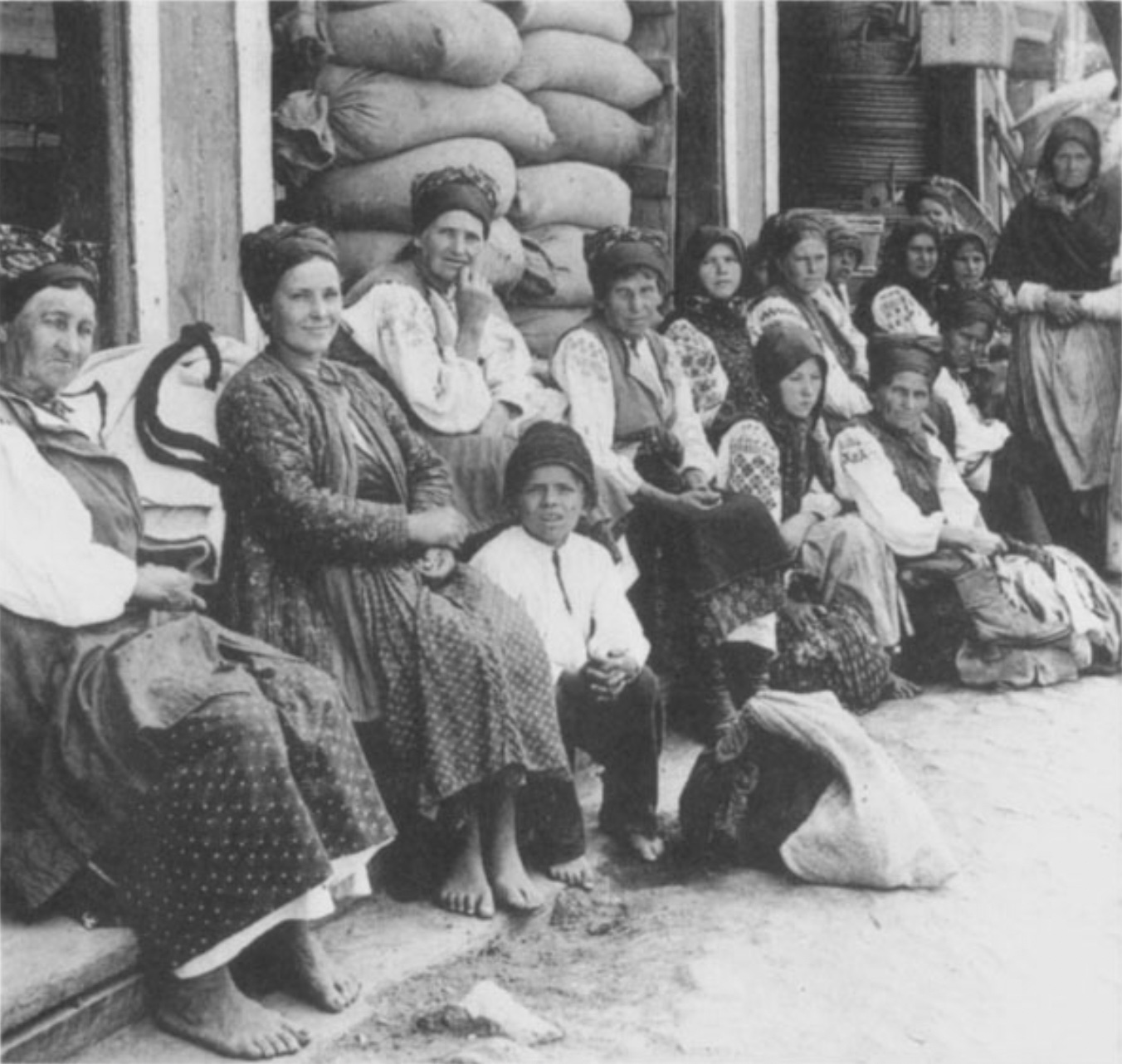
More generally, women at all stages of life seemed to be treated very badly—starting from birth:
But when a girl was born, the grandparents stopped thinking about her as soon as she was baptized. They did not even express any sorrow about her death. The young father, too, did not feel much regret over it.
If the first child is a girl, the feeling in the family is mostly one of disappointment. One of the women might remark: “Oh well, at least she can be a nursemaid.” By the following day, no one gives a thought to the baby girl.
Here, for instance, is what happens at the “bride-show,” which happens one to two weeks after a marriage proposal:
The bride is now standing in front of the groom. Her head kerchief is tied in such a way that her face is shaded. The groom’s family inspects the bride closely. “Perhaps she is lame?” they may inquire. Her sister or sister-in-law then has her walk around the room. Other questions are asked, for example, about whether she may be deaf. Then her future parents-in-law approach the bride and ask: “Why is she wrapped like that so we can’t see her eyes; is she possibly blind in one eye?” The bride’s sister uncovers her face for inspection. If the bride is pale, the groom’s family will want to know the reason, asking whether she is sickly.
If you are thinking that this does not augur well for the marriage, the bride and her family would agree with you: later, back home, the bride “pounds her head on a bench while crying out a lamentation or, as it is known here, ‘the scream.’ Her mother and sister join in:”
My father, my provider,
My dearest mother,
I’ve been given away, miserable and hapless,
And giving me away they washed it down with vodka
And a burnt bread crust.
How will it turn out for me going to live with strangers,
To a new father and mother.
I will have to please these strangers,
To be pleasing and obedient to them all.
Indeed, the marriage does not get off to a good start. After the wedding:
In the morning, the best man and the godmother wake up the bridal couple. The godmother orders the young wife to sweep the floors. Copper coins have been tossed around on the floor beforehand, and the wife is told to give her mother-in-law any coins she finds. This is done to find out if the young wife is a thief, and also to see how well she sweeps the floor.
Nor are women supported well in pregnancy:
During pregnancy, a woman continues to be responsible for all her usual chores, both in the household and in the field—including binding the sheaves, weeding, threshing, gathering in the hemp, planting and digging potatoes—right up to the onset of labor. Women frequently give birth while performing a domestic chore, such as kneading bread, or even when they are at work in the field; others do so riding in a bumpy wagon as they are hurrying home after being prompted by the first pangs of the approaching birth.
Infants
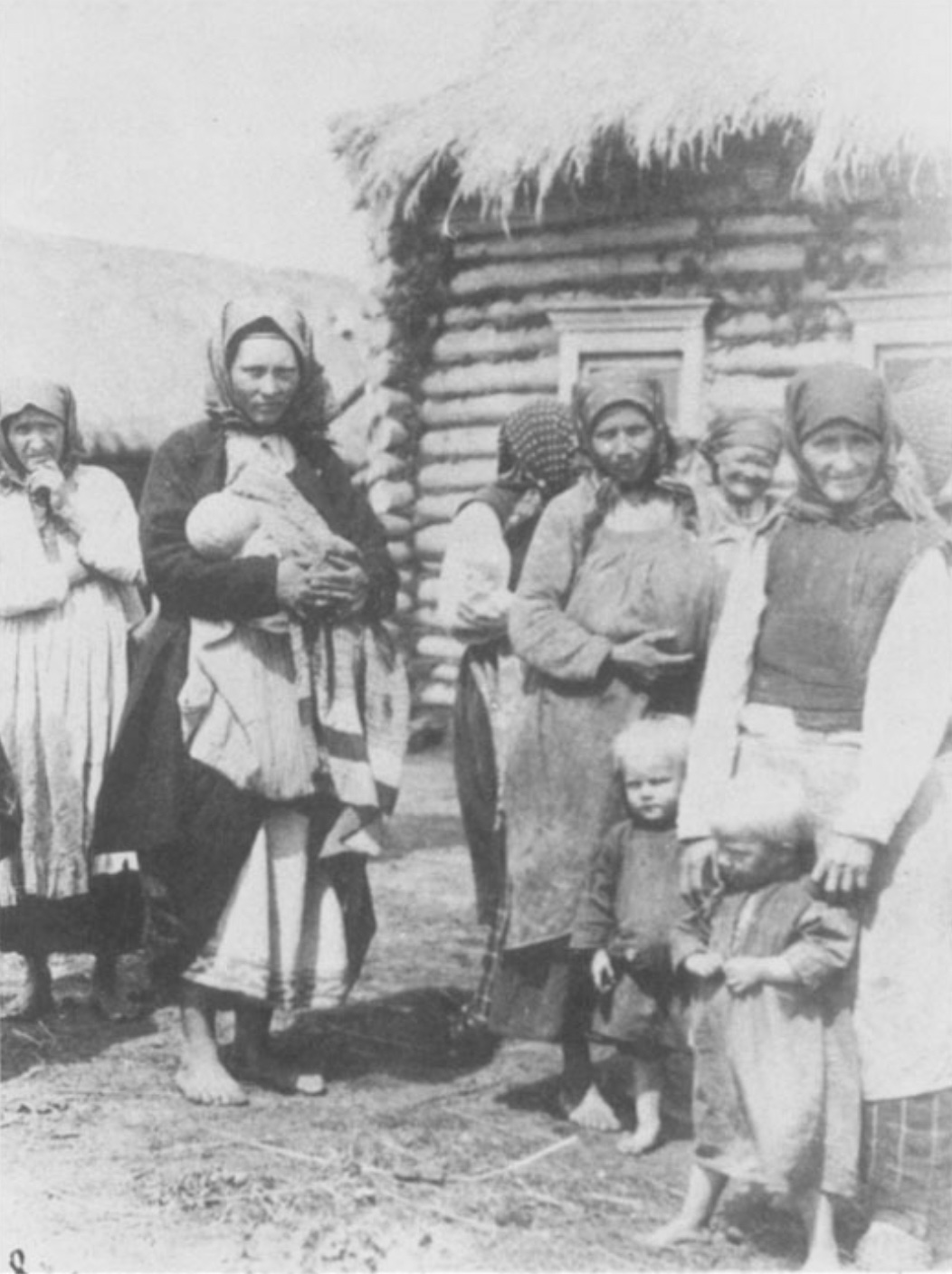
But most shocking to me—again, this will be difficult to read—was the treatment of infants:
Mothers who are concerned about neatness put straw into the cradle and change it every day or two. More often, though, the baby is placed into a dirty cradle lined with its mother’s soiled old skirt: “He can just as well lie on the skirt, no better than anybody else. Others didn’t seem to die; they survived.”
Up to the time Ivan takes his first steps, he is looked after by his sister, a girl of nine or ten years of age. She has difficulty carrying him around and often drops him, exclaiming: “Oops, my goodness! How did I let go of him?” Sometimes Ivan tumbles headfirst down a hillock. When he cries, his baby-sitter uses her free hand to slap him on the face or head, saying, “Keep quiet, you son of a bitch.”
Mothers sometimes sang cruel lullabies, such as:
Hush, hush, hushaby my baby,
I’ll give you spankings,
Twenty-five of them,
To make you sleep better and deeper.
Hush, hush, hushaby my baby.
A man lives at the end of the village.
He’s neither poor, nor rich,
He has many children,
They sit on a bench
And eat straw.
I’ll make you suffer even more.
I won’t give you anything to eat.
I won’t make a bed for you.
And some were even worse than these; a footnote added by the editor says:
A Russian folklorist found that about 8 percent of her collection of thousands of lullabies were songs wishing death on babies, presumably weak infants like those mentioned here whose survival was uncertain and who may have been in pain.
Indeed, it seems that the death of a child was not always considered a tragedy:
[The death of an infant in a poor family that could not support another child was evidently regarded as a blessing, as Semyonova recorded in one of her unpublished field notes.] When a poor family’s child dies, people say: “Thank goodness, the Lord thought better of it!”
And child mortality was high. Some deaths were the result of poverty and lack of hygiene:
The rate of child deaths is highest in the summer during the fast of St. Peter [in June], and especially during the field-work season, when unattended children eat anything they come across: cucumbers, sour apples, and any other vegetation. Diarrhea is the chief cause of child death. As for the death rate, in a majority of homes more than half of all children die. Most women bear from eight to ten or twelve children, of which only three or four survive.
Some were due to smothering in bed, which was claimed to be accidental, but which happened so often that many observers believed it to be deliberate infanticide:
Moreover, young mothers very often smother their children accidentally in their sleep. The mother sometimes places her infant between herself and her husband to give the baby her breast, goes to sleep, rolls over on the baby, and smothers it. A good half of the women have overlain at least one child in this way—they do it most often in their young years when they sleep soundly. For overlying a child, the priest imposes a penance.
(A penance!)
And in the case of illegitimate children, even the pretense of accident was dropped:
Cases of infanticide of illegitimate babies are not at all rare. A married or unmarried woman gives birth alone somewhere in a shed, smothers the baby, and dumps it into the river (with a rock secured to its neck) or leaves it in a hemp thicket, or buries it either in the yard or somewhere in the pigpen.
The parents of a young woman who had gotten pregnant out of wedlock married her off to hide her sin. When the woman gave birth, her husband’s family [with whom she was then living] turned against the child. Although her husband was a peaceful, simple-hearted fellow who did not reproach his wife for her youthful indiscretion, his family was relentless and eventually demanded that she “get rid of the little bastard.” This demand was so insistent, the poor woman being continually beaten and persecuted by her in-laws, that she gave in. She filled the infant’s pacifier rag with sulfur scraped off matches, placed it in the baby’s mouth, and it soon died. The mother was taken to court but was acquitted.
Not all babies are subject to killing, but illegitimate ones are very likely to be. A weak baby that is a burden to its mother is not killed, although its parents will grumble at its existence and constantly express a desire for its death.
Older women are very ruthless and cold-blooded about the killing of an illegitimate “whelp,” whom they view as a nuisance and a burden. Young women anguish over such a decision and force themselves to kill their babies only when shame or fear causes them to lose their senses, or when they can no longer bear their own and their babies’ suffering. Men, from what I could observe, often simply do not know about such killings, even when they occur in their own families, or, if they figure out what is going on, they look the other way.
The editor adds:
Semyonova’s observations are disturbing to modern readers, but there is no reason to doubt their accuracy. My own recent researches on this question suggest that in many parts of Russia, children, unwanted because of illegitimacy, physical malformation, or apparent weakness, met their deaths either quickly through infanticide of the kinds described by Semyonova or more slowly by a reduced level of care and feeding.
What to make of all this?
First, note that this book is not entirely the work of Semyonova or even of her collaborator, K. V. Nikolaevskii. She left the work unfinished when she died, and her notes were put together into a coherent form by Ransel, the editor.
Second, Semyonova was not an entirely neutral observer. As Ransel says in the introduction:
She clearly sensed the otherness of the peasant world and regarded the peasants as different from educated, urbanized Russians in fundamental ways. … Her stance was that of a progressive, westernizing member of the Russian intelligentsia. She wanted the peasants to share her respect for private property, her values of thrift and hard work, and she believed that without these values they could not become enlightened and productive citizens of a modern society. … To sum up, even though Semyonova renders marvelously detailed and striking portrayals of peasant behavior, she makes little effort to enter the peasants’ cultural frame. She remains outside and is entirely confident of her superiority to the peasants.
Further, she had an agenda, or at least a specific cultural purpose. Ransel quotes a 1906 letter from her collaborator Nikolaevskii: “The political and social climate of that time (as is still true today) was such that everyone expected that the peasant alone would be able to bring about a new order in Russia, and the pace of this change was also entirely dependent on the peasantry.” Ransel says, “Clearly, a central purpose of her study is to counter naive views of the peasants as naturally cooperative, communitarian beings who will provide the foundation for a new order of social peace and harmony.”
All that said, my estimation is that the specific incidents and at least the first-level generalizations are true, even if they have to be interpreted from Semyonova’s “progressive, westernizing” frame.
The question for me is how much these observations apply to peasant life in other places and at other times. I’m hesitant to generalize, since this is the first book-length work of ethnography I’ve read in the context of this project, but for me it opens questions. Is cruelty towards animals and children, and an almost slave status for women, the norm? If Russian peasants were more cruel than average, are they far worse than average? If this kind of cruelty is common, is it inherent to poverty, including the lower levels of education that necessarily accompany poverty? And if so, does increased wealth and education alone lead to a more humane society, or did the transition to more equal rights and status also require a change in morals and other ideas that is not a natural or inherent consequence of material progress?
The main reason this matters is that equal rights and humane treatment are part of human well-being, and therefore how those things were achieved is part of the story of progress. But a secondary reason I am interested is that one criticism of modernity claims that today we are more “disconnected” from our families and our communities. In the case of Russian peasant women in particular, their “connection” to husbands who beat them, in-laws who scorned and humiliated them, and a community that offered no support, was not enriching but immiserating. The escape from those “connections,” provided by wealth, education, and opportunities for jobs and migration, would have been a boon.
